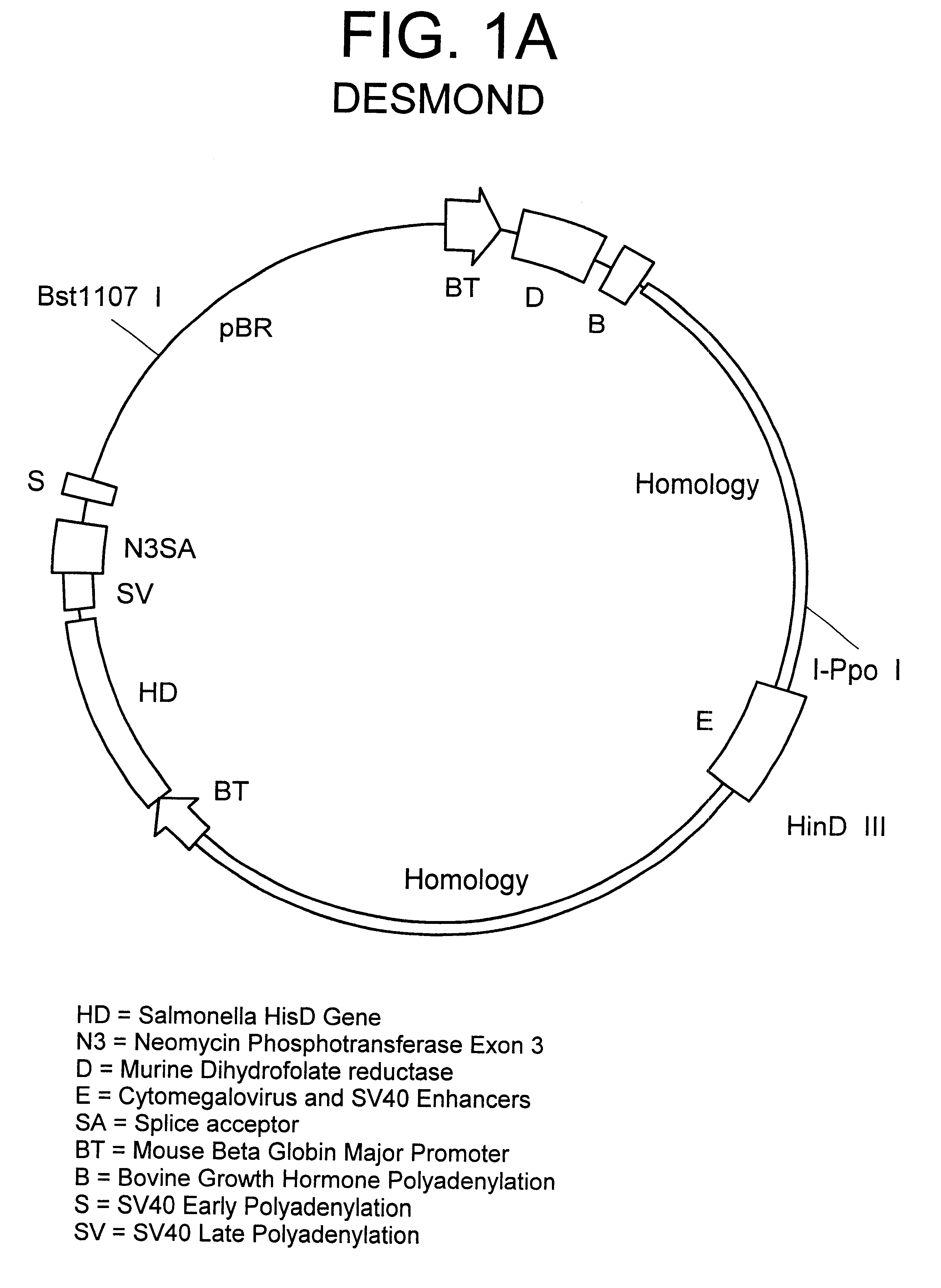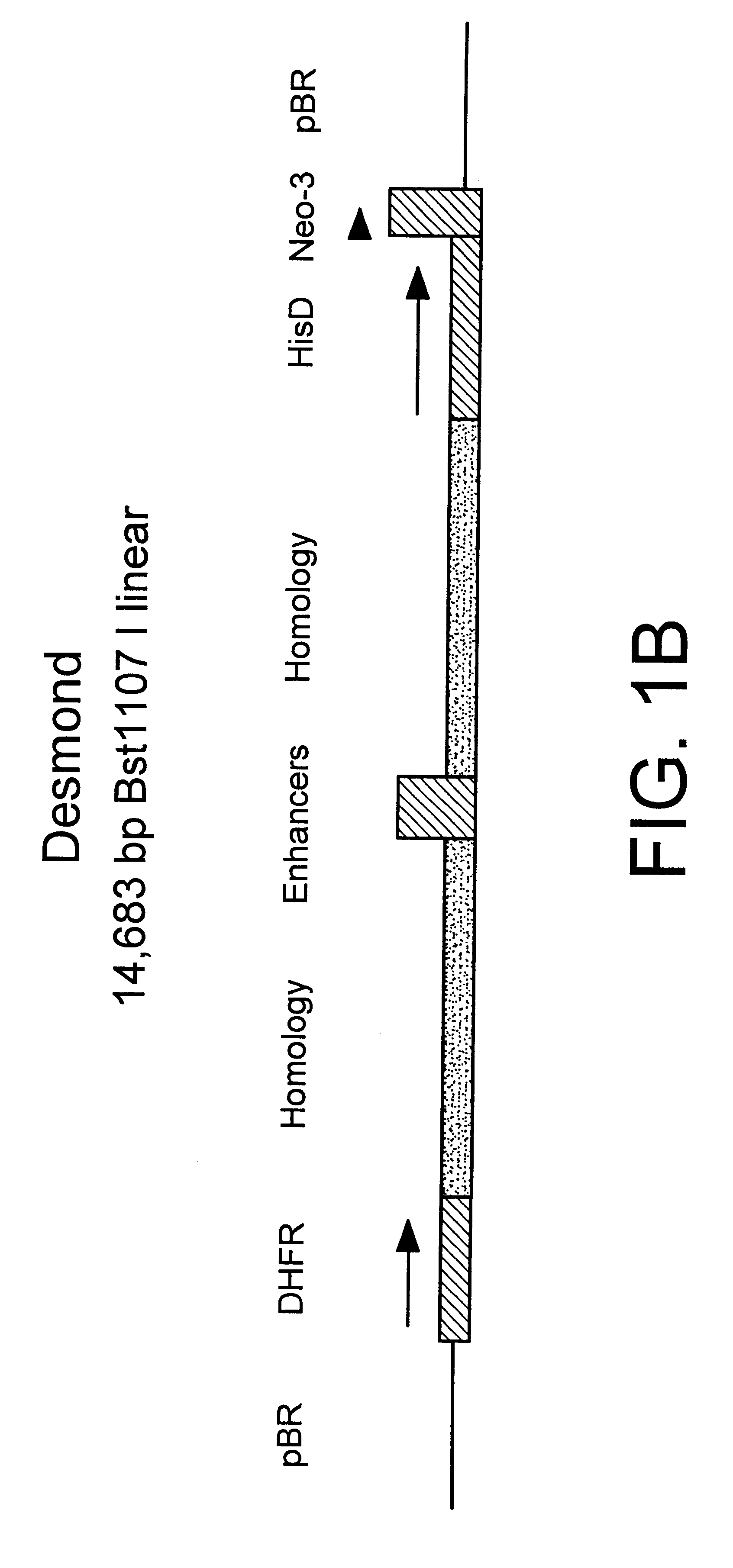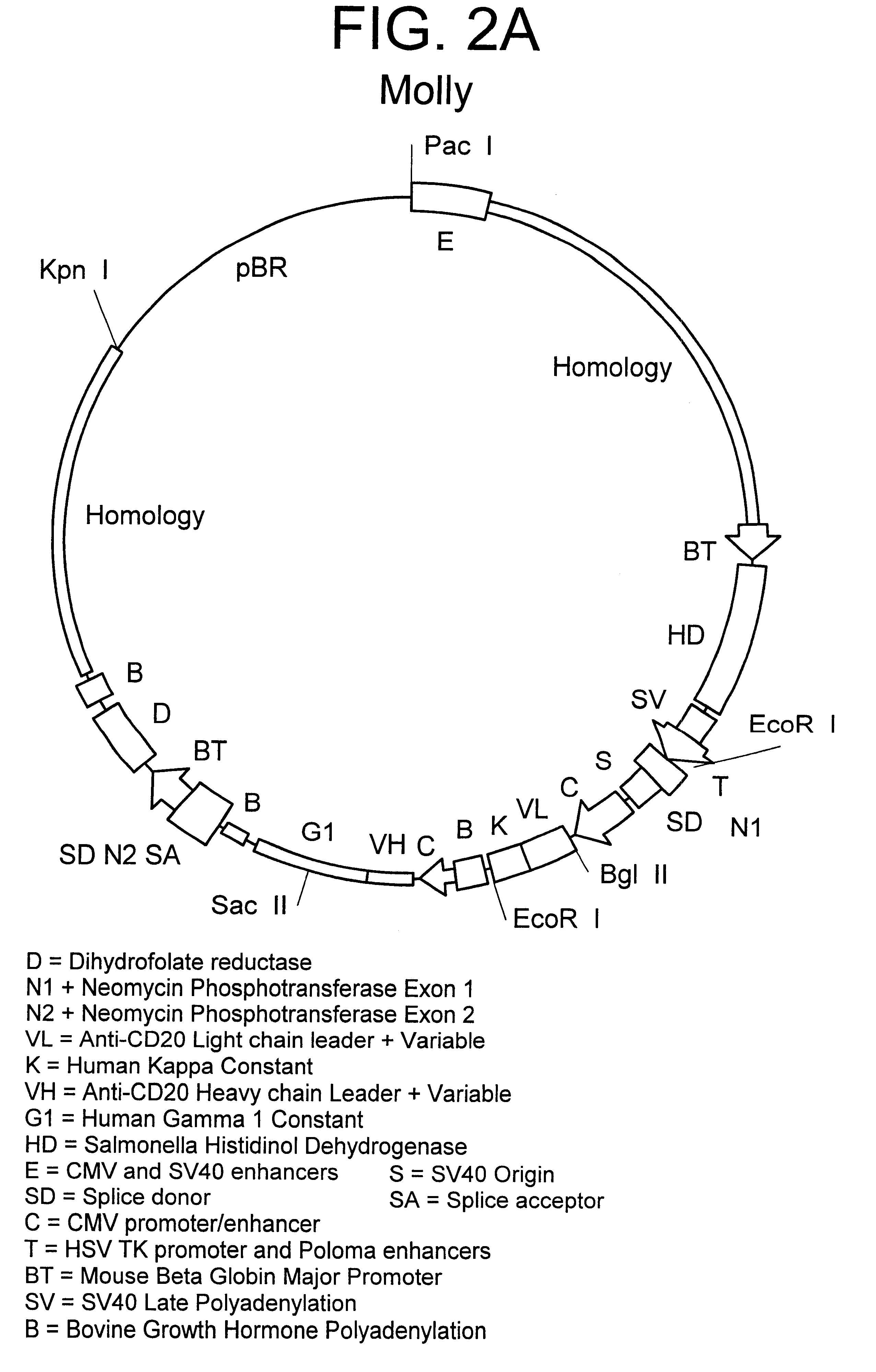Method for integrating genes at specific sites in mammalian cells via homologous recombination and vectors for accomplishing the same
a gene and specific site technology, applied in the field of gene integration at specific sites in mammalian cells via homologous recombination and vectors for accomplishing the same, can solve the problems of complex and laborious process of generation of high-expressing stable mammalian cell lines, no control over the transcriptional fate of the integrated dna, and a large number of colonies, so as to reduce the number of colonies , the effect of high level and enhanced expression of the gen
- Summary
- Abstract
- Description
- Claims
- Application Information
AI Technical Summary
Benefits of technology
Problems solved by technology
Method used
Image
Examples
example 2
Construction of a Marked CHO Cell Line
1. Cell Culture and Transfection Procedures to Produced Marked CHO Cell Line
Marker plasmid DNA was linearized by digestion overnight at 37.degree. C. with Bst1107I. Linearized vector was ethanol precipitated and resuspended in sterile TE to a concentration of 1 mg / ml. Linearized vector was introduced into DHFR-Chinese hamster ovary cells (CHO cells) DG44 cells (Urlaub et al, Som. Cell and Mol. Gen., 12:555-566 (1986)) by electroporation as follows.
Exponentially growing cells were harvested by centrifugation, washed once in ice cold SBS (sucrose buffered solution, 272 mM sucrose, 7 mM sodium phosphate, pH 7.4, 1 mM magnesium chloride) then resuspended in SBS to a concentration of 10.sup.7 cells / ml. After a 15 minute incubation on ice, 0.4 ml of the cell suspension was mixed with 40 .mu.g linearized DNA in a disposable electroporation cuvette. Cells were shocked using a BTX electrocell manipulator (San Diego, Calif.) set at 230 volts, 400 microfar...
example 3
Characterization of Marked CHO Cell Lines
(a) Southern Analysis
Genomic DNA was isolated from all stably growing Desmond marked CHO cells. DNA was isolated using the Invitrogen Easy.RTM. DNA kit, according to the manufacturer's directions. Genomic DNA was then digested with HindIII overnight at 37.degree. C., and subjected to Southern analysis using a PCR generated digoxygenin labelled probe specific to the DHFR gene. Hybridizations and washes were carried out using Boehringer Mannheim's DIG easy hyb (catalog #1603 558) and DIG Wash and Block Buffer Set (catalog #1585 762) according to the manufacturer's directions. DNA samples containing a single band hybridizing to the DHFR probe were assumed to be Desmond clones arising from a single cell which had integrated a single copy of the plasmid. These clones were retained for further analysis. Out of a total of 45 HisD resistant cell lines isolated, only 5 were single copy integrants. FIG. 4 shows a Southern blot containing all 5 of these...
example 4
Expression of Anti-CD20 Antibody in Desmond Marked CHO Cells
C2B8, a chimeric antibody which recognizes B-cell surface antigen CD20, has been cloned and expressed previously in our laboratory. (Reff et al, Blood, 83:434-45 (1994)). A 4.1 kb DNA fragment comprising the C2B8 light and heavy chain genes, along with the necessary regulatory elements (eukaryotic promoter and polyadenylation signals) was inserted into the artificial intron created between exons 1 and 2 of the neo gene contained in a pBR derived cloning vector. This newly generated 5 kb DNA fragment (comprising neo exon 1, C2B8 and neo exon 2) was excised and used to assemble the targeting plasmid Molly. The other DNA elements used in the construction of Molly are identical to those used to construct the marking plasmid Desmond, identified previously. A complete map of Molly is shown in FIG. 2.
The targeting vector Molly was linearized prior to transfection by digestion with Kpn1 and Pac1, ethanol precipitated and resuspende...
PUM
| Property | Measurement | Unit |
|---|---|---|
| concentration | aaaaa | aaaaa |
| resistance | aaaaa | aaaaa |
| concentration | aaaaa | aaaaa |
Abstract
Description
Claims
Application Information
 Login to View More
Login to View More - R&D
- Intellectual Property
- Life Sciences
- Materials
- Tech Scout
- Unparalleled Data Quality
- Higher Quality Content
- 60% Fewer Hallucinations
Browse by: Latest US Patents, China's latest patents, Technical Efficacy Thesaurus, Application Domain, Technology Topic, Popular Technical Reports.
© 2025 PatSnap. All rights reserved.Legal|Privacy policy|Modern Slavery Act Transparency Statement|Sitemap|About US| Contact US: help@patsnap.com



